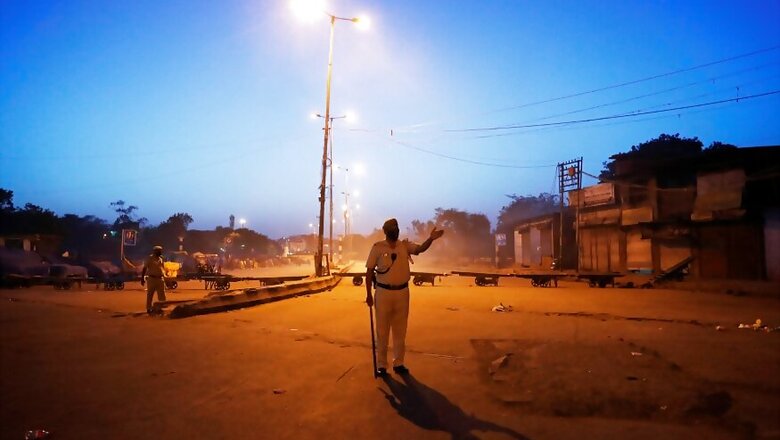
views
New Delhi: The central government has identified 170 districts in the country as Covid-19 hotspots and classified them under the Red Zone, which will have the strictest lockdown measures to prevent further spread of the coronavirus.
The Centre has declared 170 hotspots -- 123 hotspot districts with large outbreaks and 47 hotspot districts with clusters -- in 25 states and Union territories. It has also identified 207 non-hotspot districts with clusters in 27 states.
Districts witnessing high number of cases or high growth rate of infections are being marked as hotspots; districts where some cases have been found as non-hotspots; and those which have reported no cases as green zones.
Tamil Nadu, with 22 of its 27 districts, is the state with the highest number of districts designated as hotspots followed by Maharashtra with 14, Uttar Pradesh with 13, Rajasthan with 12, Andhra Pradesh with 11, Delhi with 10.
Telangana, which has over 600 cases, is next on the list with nine hotspot districts, followed by Punjab, Jammu and Kashmir and Karnataka with eight each, Kerala with seven, and Gujarat, Madhya Pradesh and Haryana with six each. Assam and Himachal Pradesh have five such districts each, all of them with cluster outbreaks. Bihar and West Bengal have four districts each in the Red Zone.
The Red Zone districts have been further classified as areas with large outbreaks or with cluster outbreaks. While a large outbreak district would have uniform restrictions, one with a cluster outbreak may see stricter restriction in the identified area than the rest of the district.
White and Green Zones
The government has also identified 207 districts as non-hotspot districts that have reported coronavirus cases under the White Zone and 353 districts that are not affected at all by the pandemic, which fall under the Green Zone.
The 353 districts that are under the Green Zone could see restrictions being relaxed from April 20 if they continue to keep the virus at bay, as Prime Minister Narendra Modi had said in his speech announcing the extension of the lockdown on April 14.
The home ministry had on Wednesday released fresh guidelines that listed services that would be exempt from the lockdown for non-hotspot districts.
The White Zone districts would also see containment measures, the health ministry said, to ensure that cases in these areas remain under control.
States also need to undertake effective surveillance of SARI (Severe Acute Respiratory Infection) and ILI (Influenza like illness) cases in both White and Green Zone districts, besides ensuring dedicated COVID hospitals.
How Classification Works
The health ministry said that for a district to be classified as a hotspot, it would have to fulfil any of these three criteria: 1) Highest case load districts contributing to more than 80% of cases in India or 2) Highest case load districts contributing to more than 80% of cases for each state or 3) Districts with doubling rate in less than four days.
If no new case is reported from a Red Zone district in 14 days, it would be moved to the Orange Zone and if no new cases are recorded in 28 days, it will be shifted to the Green Zone.
In a letter to all chief secretaries of states and Union Territories, Union Health Secretary Preeti Sudan said hotspot districts need to ensure implementation of the outbreak containment plan, adding the states also need to identify hotspots based on the doubling rate of confirmed cases.
"This exercise of identification of hotspots has to be done on a weekly basis (every Monday) or earlier. Strict containment measures need to be implemented in these hotspots," she said.
Further, for non-hotspot districts reporting cases, states need to ensure that containment measures are taken so as to ensure that cases in these areas can be contained.
Sudan asked states to undertake effective surveillance of severe acute respiratory illness (SARI) and infuenza-like illness (ILI) cases in districts that do not have any confirmed cases so far besides ensuring setting up of dedicated COVID-19 hospitals.
(With inputs from PTI)


















Comments
0 comment